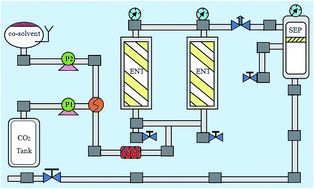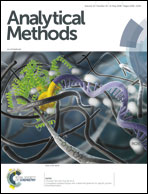Supercritical CO2 extraction for the determination of tetrachloroethylene residues in dry-cleaned apparel
Abstract
Tetrachloroethylene (PERC) is still one of the most widely used dry cleaning agents in the world. It is, however, a toxic substance to the human body which could damage the central nervous system and increase the risk of cancer. Thus, it is necessary to monitor PERC residues in dry-cleaned apparel fabrics. This paper has established a type of analytical method, which was based on supercritical carbon dioxide (SC-CO2) extraction technology with gas chromatography-mass spectrometry (GC-MS), to detect the residual amount of PERC. A flow rate of 0.9 mL min−1 dichloromethane was used as the optimum extraction entrainer. The optimal extraction conditions were obtained by the response surface methodology as follows: an extraction pressure of 368.21 bar, a temperature of 36.62 °C, an extraction time of 31.64 min, and a CO2 flow rate of 31.48 g min−1. PERC was analyzed using a GC-MS instrument and the retention time of PERC was 4.877 min, and the limit of detection was determined to be 0.04 mg kg−1. The PERC recovery rates of cotton, silk, polyester, and mink ranged from 94.2 to 103.6%, with an RSD between 1.67 and 3.78%. The establishment of the method could also provide a reference for the detection of other harmful substances in textiles.



 Please wait while we load your content...
Please wait while we load your content...